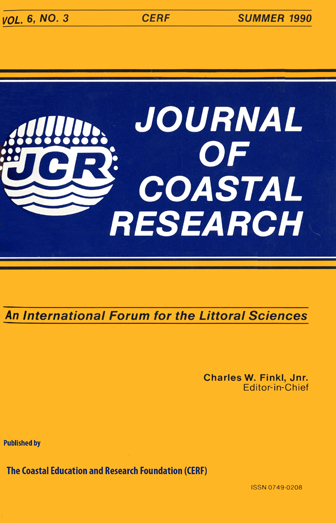Temporal and Spatial Distribution of Clay Minerals in Late Quaternary Deposits of the Nile Delta, Egypt
Keywords:
Delta tilting, Egypt Shelf clays, Manzala lagoon, Nile River clays, provenanceAbstract
This study examines the clay-size fraction in radiocarbon-dated argillaceous core sections of Late Pleistocene (~30,000-15,000 years BP) and Holocene (~ 7500 years BP to the present) age in the north-central and northeastern Nile delta, Egypt. Proportions of smectite are higher, and of kaolinite and illite are lower, in the older stiff brown muds than in the soft grey Holocene facies. Moreover, Late Pleistocene deposits comprise lower proportions of interstratified illitic layers in smectite-illite clay minerals, and show somewhat higher crystallinity indices for smectite and kaolinite than in the Holocene sediments. Clay minerals in Late Pleistocene facies show a close affinity to those in Recent River Nile samples, indicating a fluvial origin: deposition probably occurred in periodically-flooded depressions bordering incised channels of the Nile on a subaerially-exposed plain. In contrast, Holocene muds contain clay minerals which are comparable to those in Recent marine deposits: they accumulated in settings affected by marine conditions as the sea encroached on the northern delta margin. Some of the detrital smectite was transformed into smectite-illite by fixation of potassium ions present in seawater during and/or shortly after deposition. Much higher proportions of smectite, and lower concentrations of kaolinite and illite, are recorded in the northeastern than in the north-central delta region during both the Late Pleistocene and the Recent. This may indicate a preferential flow of Nile waters toward an area presently occupied by Lake Manzala. Clay mineral distribution patterns thus reflect, in part, the effects of concurrent subsidence and tilting of the northern delta plain to the northeast and eustatic rise in sealevel. These events altered the depositional settings of the study area during the Late Quaternary, i.e. from an alluvial plain to a deltaic complex of fluvial, coastal and shallow marine environments. Sediment transport, syn-depositional conditions and provenance were more important than post-depositional diagenetic effects in controlling both temporal and geographic clay mineral composition and distribution patterns.
Downloads
Published
1990-07-17
Issue
Section
Articles


